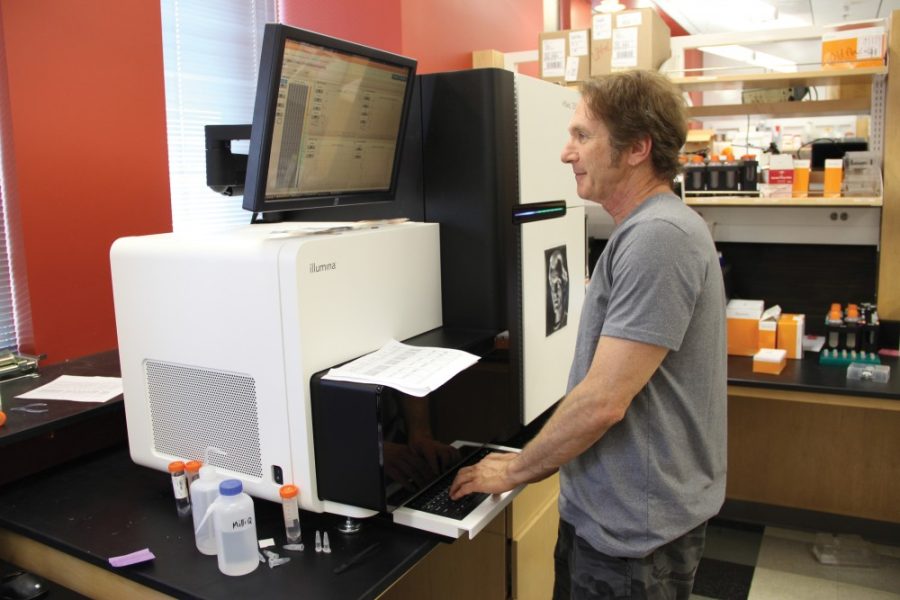Michael Hammer, geneticist and researcher at the UA, is one of a few in his field who can lay claim to a groundbreaking medical discovery, but his personal stake in the matter is much deeper.
Hammer’s daughter, Shay, was epileptic and began having seizures at an early age and had limited coordination and learning skills.
She died from complications from the disease in March 2011.
After she died, Hammer, along with a team of UA researchers, were able to find the genetic cause of her affliction. Those findings led the team to conduct a second study, in which they used DNA sequencing technology to look for the causes of severe epilepsies
in children from 10 different families.
The study, which was recently published in the journal “Epilepsia,” found genetic mutations that are known to or suspected of having caused epilepsies in seven of the 10 children studied.
Although Hammer, who is a research scientist in UA’s Arizona Research Laboratories Division of Biotechnology and a member of the UA BIO5 Institute, was initially hesitant to speak publicly about his daughter’s story, he said he is now more open about it because he knows it helps families who are in a similar situation.
“It’s important for me to acknowledge that none of this would have happened without her,” he said.
In 2010, after years of inconclusive tests, Hammer said he made it his mission to find the cause of his daughter’s epilepsy. He sent samples of his family’s DNA to a lab in California to have them sequenced. The data produced were then analyzed by Hammer and his team at the UA.
Hammer said many of his colleagues tried to talk him out of it, citing the low probability of success, but he persisted.
“I said, ‘Well, even if there’s a 1 percent chance of finding something, I’m going to try it,’” Hammer said.
Despite the odds, Hammer’s team identified a mutation in a gene not previously associated with epilepsy, which, upon further research was shown to have effects relevant to epilepsy.
“That was the first ever case of finding a gene involved in any neurological disorder using these new whole-genome techniques,” said Krishna Veeramah, a postdoctoral researcher in Hammer’s group
and the first author of the study.
“I thought, ‘If we can do it for her, we can do it for other kids,’” Hammer said.
For their study, the team selected children who, like Hammer’s daughter, had seizures within the first year of life, in addition to developmental issues like autism and impaired movement. The DNA of the child and the parent’s were sampled and sequenced.
The sequencing technique employed was called whole-exome sequencing. Instead of looking at all 3 million base pairs, whole-exome sequencing looks only at the 2 percent of DNA that actually codes for proteins — the genes, Veeramah said.
Since the affected children didn’t have family histories of the illness, the team hypothesized that the epilepsies were caused by a “de novo” mutation, which is a genetic mutation that is present in the child’s DNA but not in the parents.
In seven out of the 10 children, mutations were found that had already been or, through subsequent research, were shown to be associated with epilepsy. According to Veeramah, the 70 percent positive rate was higher than anticipated.
The findings could lead to better diagnostic tests as well as new treatment options for the children, said Dr. Linda Restifo, a professor of neurology and co-author of the study.
“If epilepsy is manageable,” Restifo said, “meaning that the child takes a medication long-term, but grows up to be a functional adult … we’re now light-years ahead of where we are for many of these kids.”
The results also offer answers for the families of those affected by such disorders, who likely feel lost after years of testing without a medical diagnosis, Hammer said.
“As a parent, I know how much it means,” he said. “Just knowing is a huge relief.”









